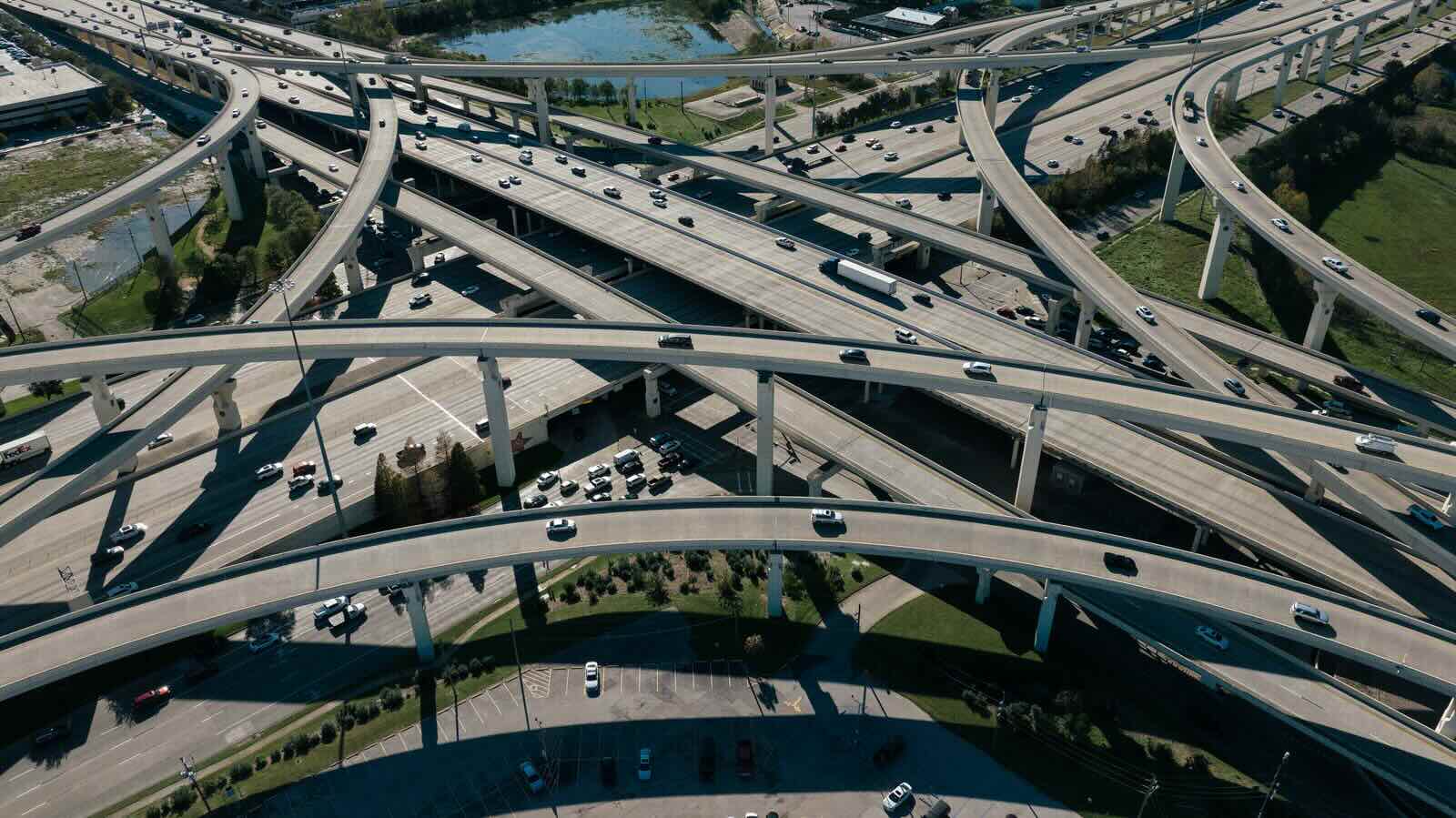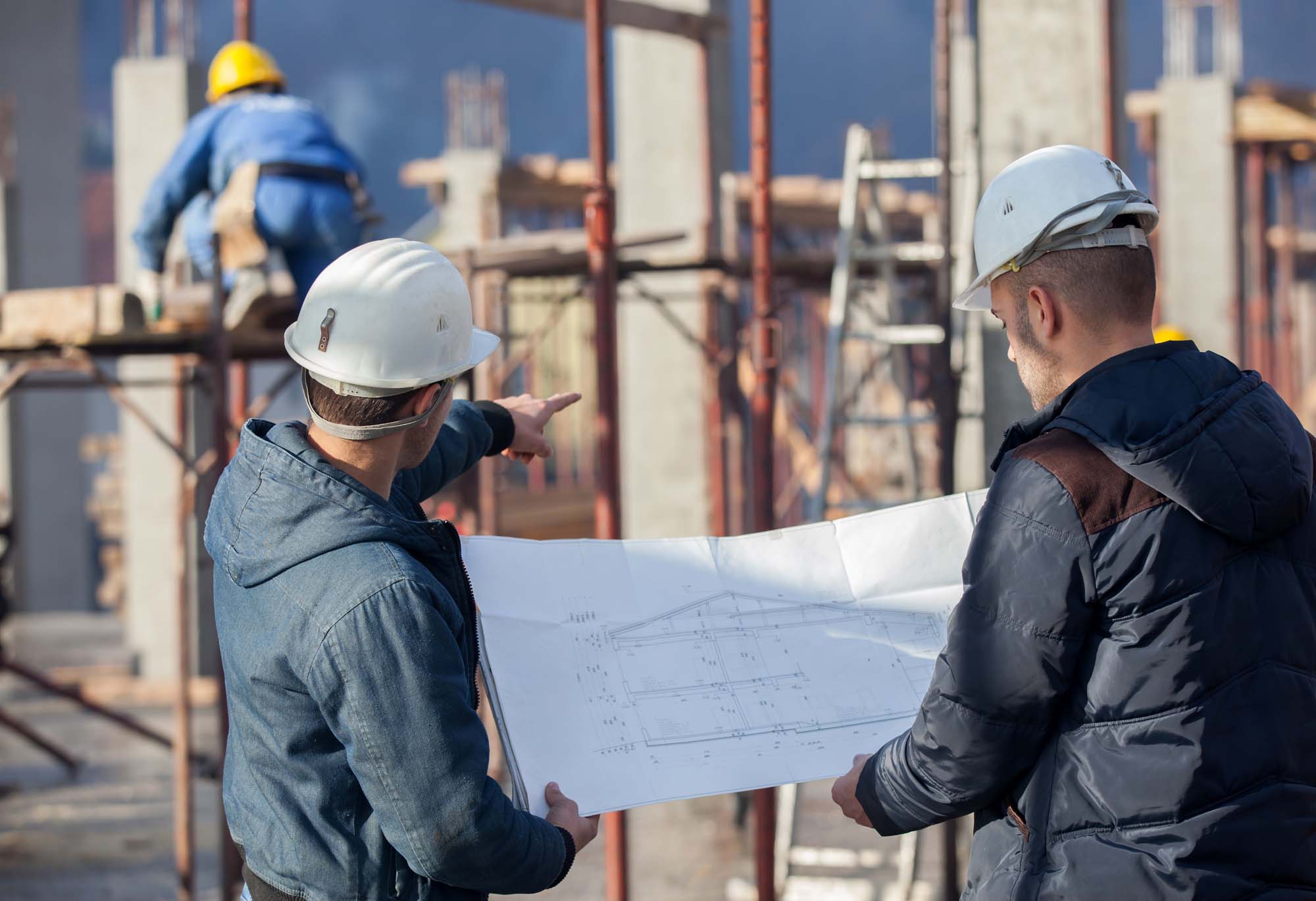Home>diy>Building & Construction>What You Might Have To Do For Some Highway Construction (NYT)


Building & Construction
What You Might Have To Do For Some Highway Construction (NYT)
Modified: December 7, 2023
Discover what you need to do for highway construction projects and stay updated on the latest building construction news in this comprehensive article from The New York Times.
(Many of the links in this article redirect to a specific reviewed product. Your purchase of these products through affiliate links helps to generate commission for Storables.com, at no extra cost. Learn more)
Introduction
Highway construction is a complex and crucial aspect of infrastructure development, providing a crucial lifeline for transportation and economic growth. It involves the planning, designing, and construction of road networks that connect cities, towns, and rural areas. Whether it’s expanding existing highways, rehabilitating roads, or building new infrastructure, highway construction plays a vital role in improving connectivity and facilitating the movement of goods and people.
The construction of highways requires a coordinated effort involving engineers, architects, surveyors, construction workers, and various other professionals. Each project is unique and presents its own set of challenges, ranging from the acquisition of right-of-way to traffic management during construction. Let’s explore the different types of highway construction projects and the key steps involved in bringing them to life.
Key Takeaways:
- Highway construction involves expanding existing highways, rehabilitating roads, and building new infrastructure. It requires careful planning, environmental considerations, and effective traffic management to ensure successful completion and long-term maintenance.
- Key factors in highway construction include feasibility studies, environmental impact assessments, and obtaining necessary permits. The process involves acquiring land, designing detours, and implementing traffic management plans to minimize disruptions and ensure public safety.
Read more: What Education Do Construction Painters Have
Types of Highway Construction Projects
Highway construction projects can be classified into three main categories: expansion of existing highways, road rehabilitation and resurfacing, and construction of new highways. Each type serves a unique purpose and requires specific planning, design, and construction approaches.
Expansion of existing highways: As urban areas grow and traffic volumes increase, there becomes a need to widen existing highways to accommodate more vehicles. Expansion projects involve adding extra lanes, constructing new interchanges, and improving the overall capacity of the road network. The goal is to reduce congestion, enhance traffic flow, and improve safety for motorists. This type of construction requires careful planning to minimize disruption to existing traffic flows and ensure the safety of motorists and construction workers.
Road rehabilitation and resurfacing: Over time, roads can deteriorate due to heavy traffic, weather conditions, and aging infrastructure. Road rehabilitation projects aim to restore and maintain the integrity and functionality of existing roadways. This may involve repairing potholes, replacing damaged pavement, upgrading road signage, and improving drainage systems. By rejuvenating existing roads, these construction projects enhance driving conditions, reduce vehicle wear and tear, and improve overall road safety.
Construction of new highways: In regions with inadequate road networks, new highway construction projects are undertaken to improve accessibility and connectivity. These projects involve the design and construction of entirely new roadways, often spanning long distances and connecting different cities or regions. New highway construction typically requires extensive feasibility studies, environmental impact assessments, and public consultation to ensure the project aligns with the needs of the community and minimizes any adverse effects on the environment.
Each type of highway construction project presents its own set of challenges and considerations. However, they all share the common goal of enhancing transportation infrastructure and facilitating the smooth flow of traffic. Whether it’s expanding existing highways to accommodate growing populations, rehabilitating roads to ensure their longevity, or constructing new highways to improve connectivity, each project contributes to the overall development and progress of a region.
Project Planning and Design
Before any highway construction project can begin, thorough planning and design are essential. This phase involves conducting feasibility studies, assessing the environmental impact, and obtaining necessary permits and approvals.
Conducting feasibility studies: Feasibility studies are conducted to assess the viability of a highway construction project. This includes evaluating factors such as the projected traffic volume, cost estimates, economic impact, and potential benefits to the community. These studies help determine the best route, design, and construction methods for the project.
Environmental impact assessment: Highway construction has the potential to impact the environment in various ways. An environmental impact assessment (EIA) is conducted to identify and evaluate the potential effects of the project on ecosystems, wildlife, air quality, water resources, and neighboring communities. The EIA ensures that the project follows environmental regulations and adopts measures to mitigate any negative impacts.
Obtaining necessary permits and approvals: Highway construction projects require numerous permits and approvals from various authorities. These may include permits for land acquisition, right-of-way, environmental clearance, and construction activity. Obtaining these permissions involves complying with legal and regulatory requirements, engaging with stakeholders, and addressing any concerns raised during the public consultation process.
Effective project planning and design are crucial to ensure that highway construction projects are carried out efficiently and in accordance with regulatory standards. By conducting feasibility studies, assessing environmental impacts, and obtaining necessary permits, these projects can move forward with a solid foundation and a clear vision for successful completion.
Pre-construction Phase
The pre-construction phase of highway construction involves crucial activities that lay the groundwork for the actual construction process. This phase includes acquiring land or right-of-way, utilities relocation, and designing detours and traffic management plans.
Acquiring land or right-of-way: Before any construction can take place, the necessary land or right-of-way must be acquired. This involves negotiations with property owners and obtaining legal permissions to ensure that the project can proceed. The acquisition process may involve buying or leasing land, compensating affected parties, and addressing any legal or regulatory requirements related to land use and ownership.
Utilities relocation: Highways often pass through areas where existing utilities such as water pipelines, electrical cables, or gas lines are present. In the pre-construction phase, these utilities may need to be relocated to make way for the highway. This involves coordination with utility companies, ensuring continuous service during the relocation process, and adhering to safety standards to minimize disruption to utility services.
Designing detours and traffic management plans: During highway construction, it’s essential to minimize disruption to traffic flow. This involves designing detours and traffic management plans to safely redirect vehicles away from the construction site. Detour routes need to be carefully planned, considering factors such as road capacity, accessibility, and safety. Traffic management plans include signage, temporary traffic lights, and speed restrictions to ensure a smooth flow of vehicles and maintain the safety of both motorists and construction workers.
The pre-construction phase is a critical stage where the necessary preparations for highway construction are made. By acquiring land or right-of-way, relocating utilities, and designing detours and traffic management plans, the construction process can proceed effectively and with minimal impact on the surrounding environment and traffic flow.
Plan your route ahead of time and check for any construction or road closures. Be prepared for potential delays and consider alternative routes if necessary.
Construction Phase
The construction phase of highway construction involves a series of activities aimed at transforming the planned design into a tangible roadway. This phase includes clearing and grubbing the site, excavation and earthwork, building foundations and structures, installing drainage systems, paving and surfacing, and placing road signs and markings.
Clearing and grubbing the site: Before construction can begin, the site needs to be cleared of any vegetation, debris, or other obstacles. This involves removing trees, shrubs, and other vegetation, as well as demolishing existing structures or removing any obstructions that may interfere with the planned highway alignment.
Excavation and earthwork: Excavation and earthwork are crucial steps in highway construction. This involves the removal and reshaping of soil to create the desired road profile, including cuttings (removing earth to create depressions) and embankments (constructing raised areas). The excavation and earthwork process ensures that the road is built on a stable foundation and conforms to the design specifications.
Building foundations and structures: Highways often require the construction of bridges, overpasses, tunnels, and other structures to accommodate various road and traffic conditions. This phase involves building the foundations for these structures, including piers, abutments, and columns. It also includes erecting the structural components to create safe and durable infrastructure for the highway.
Installing drainage systems: Proper drainage is essential to prevent water accumulation on the highway surface and adjacent areas. During the construction phase, drainage systems such as culverts, ditches, and stormwater management infrastructure are installed to efficiently collect and channel water away from the roadway. These systems help prevent flooding, reduce the risk of erosion, and maintain the integrity of the highway.
Paving and surfacing: Once the roadbed is prepared, the next step is to pave the highway surface. This involves laying multiple layers of asphalt or concrete to create a smooth and durable driving surface. The thickness and composition of the pavement depend on factors such as traffic volume, climate conditions, and the expected lifespan of the roadway. Proper paving and surfacing ensure a comfortable and safe driving experience.
Placing road signs and markings: Road signs and markings play a crucial role in guiding and informing motorists. During the construction phase, these signs and markings are installed to indicate speed limits, directions, road conditions, and other important information. They help improve safety by providing clear guidance to drivers and ensuring compliance with traffic regulations.
The construction phase of highway construction requires the coordinated effort of various professionals, including engineers, construction workers, and equipment operators. By effectively clearing the site, performing excavation and earthwork, constructing foundations and structures, installing drainage systems, paving and surfacing, and placing road signs and markings, a well-constructed highway is created to meet the needs of users and enhance transportation infrastructure.
Read more: What To Do If You Have Bed Bugs
Traffic Management during Construction
During the construction phase of highway projects, effective traffic management is crucial to ensure the safety of motorists and construction workers, as well as to minimize disruptions to traffic flow. This involves implementing temporary traffic control measures, establishing detours and rerouting plans, and managing work zones and safety.
Temporary traffic control measures: To facilitate safe and efficient traffic flow through construction zones, temporary traffic control measures are put in place. This includes the use of signage, barriers, and cones to redirect vehicles, warn drivers of upcoming construction activities, and provide information about alternate routes. These measures help create a clear and organized path for motorists and ensure their safety during the construction process.
Detours and rerouting: In some cases, parts of the highway may need to be closed during construction. To minimize disruptions and maintain traffic flow, detour routes and rerouting plans are established. This involves identifying alternate roads, modifying existing road networks, and providing clear signage and directions to guide motorists safely around the construction site. Detours and rerouting plans are critical to ensure that traffic can continue to move smoothly despite the construction activities.
Managing work zones and safety: Work zones present unique challenges due to the presence of ongoing construction activities and the need to protect both motorists and construction workers. Managing work zones involves implementing safety measures such as reduced speed limits, warning signs, and barriers to separate traffic from construction areas. Flaggers or traffic control personnel may be present to direct traffic and ensure the safe movement of vehicles through the work zones. Regular inspections and enforcement of safety protocols are essential to maintain a secure environment for all parties involved.
Effective traffic management during highway construction is crucial to minimize disruptions, ensure public safety, and maintain traffic flow. By implementing temporary traffic control measures, establishing detours and rerouting plans, and managing work zones and safety, highway construction projects can proceed smoothly and efficiently, while minimizing the impact on motorists and surrounding communities.
Environmental Considerations
Highway construction projects have the potential to impact the environment in various ways. It is important to consider and address these environmental concerns throughout the construction process. Some key considerations include mitigating noise and air pollution, protecting wildlife and ecosystems, and minimizing disruption to local communities.
Mitigating noise and air pollution: Highway construction activities can generate significant noise levels and contribute to air pollution through vehicle emissions and dust. To minimize these impacts, noise barriers can be installed along the highway to reduce noise levels for nearby residences and businesses. Construction equipment can be equipped with noise-reducing technologies, and proper dust suppression measures can be implemented. Additionally, using fuel-efficient and low-emission equipment can help mitigate air pollution during construction.
Protecting wildlife and ecosystems: Highways often pass through or near important wildlife habitats and sensitive ecosystems. During the construction process, steps must be taken to minimize disturbance to these areas. Environmental impact assessments are conducted to identify and mitigate potential impacts on wildlife, vegetation, and water bodies. Measures may include the implementation of wildlife crossings, protective barriers, and erosion control methods to safeguard habitats and preserve biodiversity.
Minimizing disruption to local communities: Highway construction projects can cause temporary inconveniences for local communities, including traffic delays and detours. Minimizing disruption involves careful planning and coordination. Construction work may be scheduled during off-peak hours or phased to facilitate the smooth flow of traffic. Additionally, proactive communication and engagement with the community can help inform residents about the project timeline, expected impacts, and alternative routes to minimize inconvenience or disruptions to their daily lives.
By addressing these environmental considerations, highway construction projects can be carried out in a manner that minimizes negative impacts on the environment, wildlife, and local communities. Through innovative design, sustainable practices, and a commitment to preserving the natural surroundings, it is possible to strike a balance between infrastructure development and environmental stewardship.
Project Completion and Maintenance
Once the construction phase of a highway project is complete, there are important steps to ensure the project’s successful completion, as well as ongoing maintenance and repairs. This includes conducting a final inspection and quality control, handover to relevant authorities, and implementing a comprehensive maintenance plan.
Final inspection and quality control: Before a newly constructed highway can be opened to the public, it undergoes a final inspection and quality control process. This involves a thorough assessment to ensure that all construction work has met the required standards and specifications. Quality control measures may include checking the pavement’s smoothness, verifying the installation of road signs and markings, and ensuring that all safety measures are in place. Any necessary corrections or adjustments are made during this phase to ensure that the highway is safe and ready for use.
Handover to relevant authorities: Once the final inspection is successfully completed, the highway project is handed over to the relevant authorities, such as transportation departments or highway authorities. This involves the transfer of ownership and responsibility for the maintenance and operation of the highway. During the handover process, all necessary documentation, plans, and records related to the construction are provided to the authorities for future reference.
Ongoing maintenance and repairs: Highways require regular maintenance and repairs to ensure their longevity and operational efficiency. Maintenance activities may include routine inspections, cleaning and clearing of debris, patching potholes, repairing signs and markings, and addressing any structural issues that may arise. Regular maintenance helps to preserve the integrity of the highway, extend its lifespan, and ensure a safe and comfortable driving experience for users.
By conducting a final inspection and quality control, handover to relevant authorities, and implementing a comprehensive maintenance plan, highway projects can be successfully completed and maintained to a high standard. Ongoing maintenance and repairs are crucial to keep the highway in optimal condition, ensuring the safety and convenience of road users for years to come.
Frequently Asked Questions about What You Might Have To Do For Some Highway Construction (NYT)
Was this page helpful?
At Storables.com, we guarantee accurate and reliable information. Our content, validated by Expert Board Contributors, is crafted following stringent Editorial Policies. We're committed to providing you with well-researched, expert-backed insights for all your informational needs.















0 thoughts on “What You Might Have To Do For Some Highway Construction (NYT)”